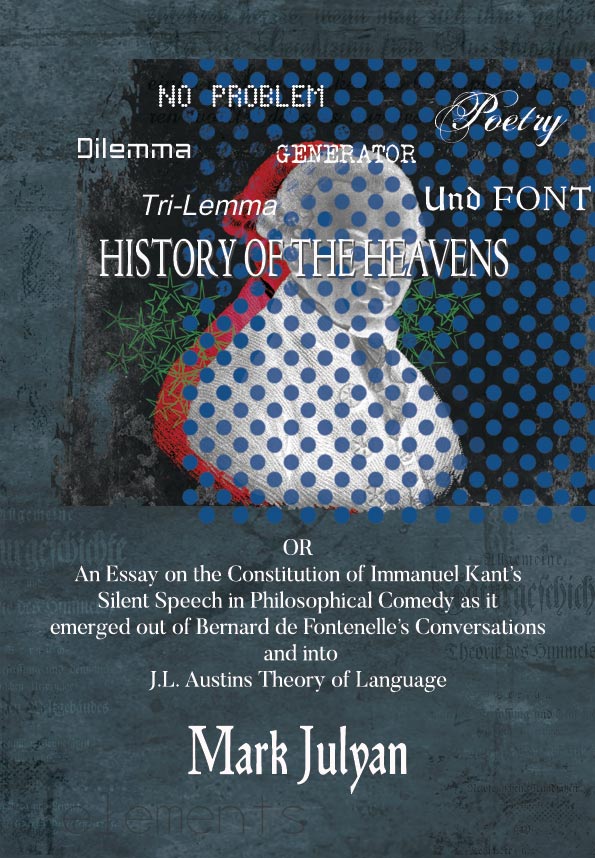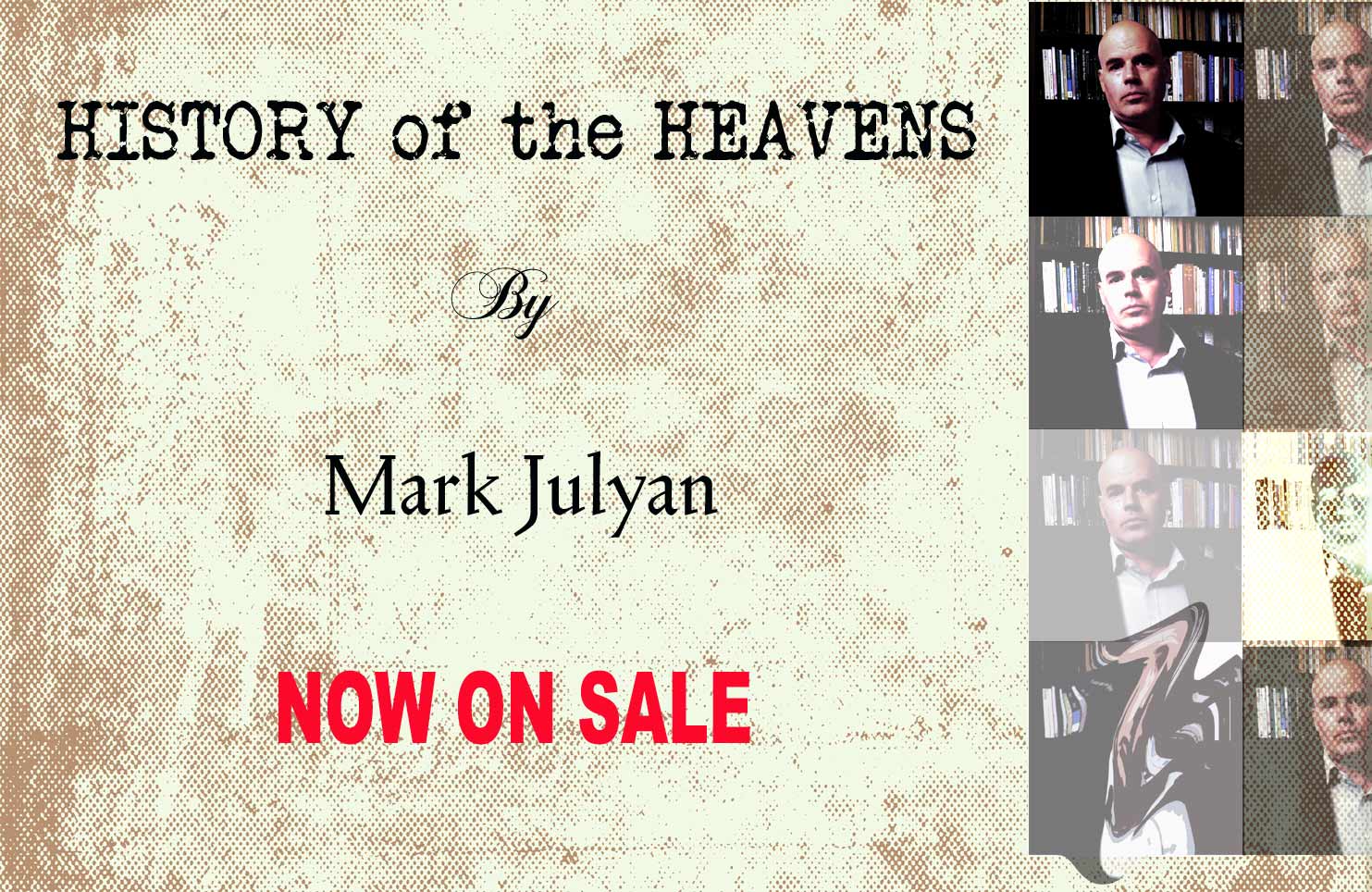

|

|
|
W/W
H/Back £72.00 Forthcoming
|
|
|
W/W
P/Back £55.00 Forthcoming
|
History
of the Heavens
Or
An
Essay
on
the Constitution of Immanuel
Kant's Silent Speech in
Philosophical
Comedy
as
it emerged
out of
Bernard
de Fontenelle’s
Conversations
and
into
J.L.
Austin's
Theory of
Language
Read the first chapter
The
book is centred around the following observations, interpretations
and conclusions relative to Kant’s Universal
Natural Theory and History of the Heavens
(1755).
-
Kant’s opening
sentence “In
my view it is a disgrace to the nature of philosophy when we use it to
maintain with a kind of flippancy free-wheeling witty displays having
some apparent
truth, if
we
are immediately willing to explain that we are doing this only as an
amusement“ was originally
constructed by Kant as either:
a) A sentence used to illustrate a form in logic (known as ‘sophismata’)
to students in his lectures using G.F. Meier’s 1752 logic
textbook the
'Vernunftlehre'.
b) Or possibly also as a parody of
Meier (who was also known as a satirist and comedian in books such as 'Thoughts
on Jesting' (1744) by Kant.
-
As Kant was writing
his Theory of the Heavens about the same time,
without a degree and looking for a career opening -
And as Voltaire had
been in Berlin under the auspices of Friedrich II between 1750-52, that
Kant therefore:
a) Added an appendix to his book which is something of a parody of
Voltaire’s ‘Micromégas’ (1752),
with an additional play on one of Voltaire’s earlier jokes in his
lampoon of the French author Bernard de Fontenelle, who Kant makes a
flea joke about; and that -
b) Kant did
this for the purpose of scandalizing the court of Friedrich II in order
to gain the attention of the King and subsequent
promotion to court philosopher,
-
Unfortunately for
Kant, apart from the few personal copies he collected on the day, his
edition was burned in a warehouse fire shortly after printing (with the
printer declaring bankruptcy and paying creditors with the insurance)
and so the project was aborted with Kant later redacting the appendix
from the 2nd edition and only reappearing in
German in 1902, and first English translation in 1981.
-
That Kant’s
sentence was sufficiently eye-opening that some German philosophers
(quite possibly at the Munich School of Phenomenology where Adolf
Reinach and Alexander Pfänder
had developed the first pragmatic language theory later to be completed
by the English philosopher J.L. Austin and that Austin was also made
aware of it at some stage.
-
That Austin made a play on
words in his ‘How to do Things with
Words’ (pp. 2-3; 1962) when he twice
spells Kant as KANT (whilst making two very curious claims about Kant)
which doesn’t make any sense in itself but which does make sense if we
interpret Austin as:
a) Performing
an
ironic parody of Kant.
b) Developing an idea out of Hermann Diels ‘Elementun
Thesaurus’ (pp.13-14; 1899) where Diels
introduces the 'vivid picture' in Aristotle’s use of capitalizing the
font as an illustration of Democritus.
c) As a play on the Font in terms of the joke about Bernard de
Fontenelle and his book ‘Entretiens
sur la Pluralité des Mondes’.
d) In such a way
that it connects it altogether with Kant’s ‘Heavens’ and can be
interpreted as “Austin
claiming
a stamp in provenance on the heavenly font in modern times
READ ON!
About
/ Book Release / Preview
/ Images / Image Credits / Contact
Follow me on
X/Twitter
Copyright © Mark Julyan
2024
|
|
|

